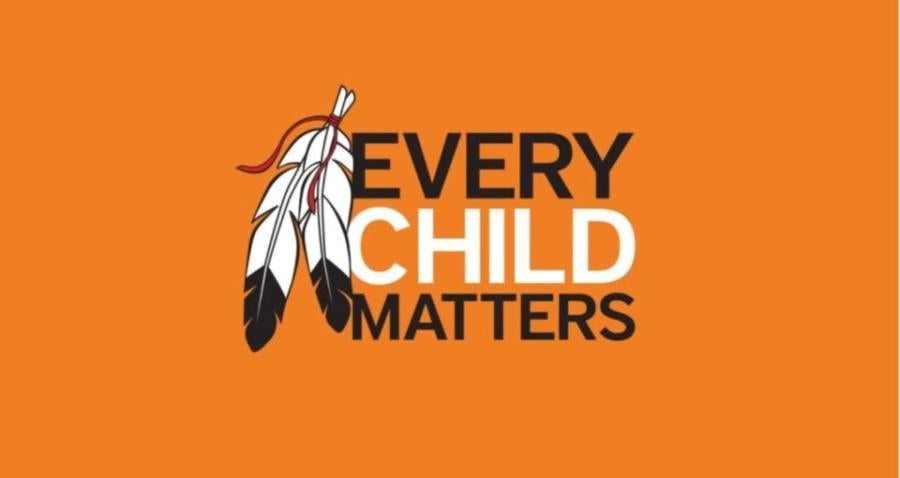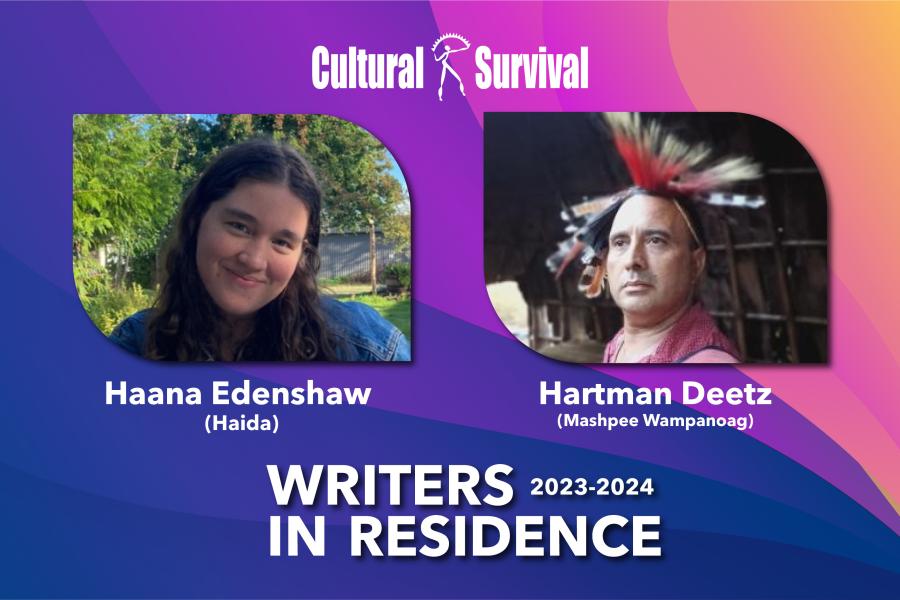The year 2000 heralds a new beginning for Cultural Survival's Education, Research and Advocacy Program. With welcome new additions to our staff and board, generous funding from a range of sources (see www.cs.org) and a new permanent base for our operations in Cambridge, Massachusetts, we are better placed than ever before to fulfill our mission of promoting the rights, voices and visions of Indigenous Peoples.
This issue of the Cultural Survival Quarterly is in two parts. The first showcases a number of our new special projects. The Ainu Oral History Project in Japan has been designed as a collaborative effort between Ainu and Native Americans; The TAFT Project, which supports the lifeways of the Higaonon of the Philippines (who have been seriously disrupted by loggers), is an initiative from Higaonon elder Datu Efren Mandipensa entailing "planting people to save trees"; The Kasiisi/Kanyawara School Building Project in Uganda will result in the construction of a new school for rural children. We also highlight the ways in which our readers can make a difference in the lives of the residents of Chiapas, Mexico, through Cultural Survival's literacy program, and among the Efe (Pygmies) and Lese of the Democratic Republic of Congo's Ituri Forest, by helping them keep their school and health clinic operational. The second part of this issue is an update on the rights of the child. Entitled "Children, the Battleground of Change," issue 10(4) of the Cultural Survival Quarterly highlighted, in a series of probing essays, emerging norms in children's rights. There have been many developments in international norms since then. However, even the Convention on the Rights of the Child (CRC), while containing specific articles on indigenous youth, is essentially a general human rights document, emphasizing the rights of individual children. In one of the articles included in this update, Aboriginal lawyer Gordon Renouf challenges the barbarity and short-sightedness of mandatory sentencing laws in Australia's Northern Territory, whereby a teenager can be sentenced to a lengthy prison term for repeated trivial offenses, such as stealing a cake or a drink. Cultural Survival board member Irene Staehelin comments on the high dropout rate of San children in South Africa, Namibia and Botswana, as reported by the Working Group of Indigenous Minorities in Southern Africa. The bulk of the papers presented here draw upon important case studies from countries such as Nepal, Tanzania, and Uganda, where the authors examine the harrowing circumstances of children removed from the protective custody of the often rich and embracing cultural context of their birth.
Cultural Survival's Research Initiatives
Perhaps the most exciting development at Cultural Survival in the year 2000 is our plan to research, publicize and promote the most successful self-determination strategies of the world's indigenous populations. The inspiration for the founding of Cultural Survival came from the unchecked "development" taking place in the Amazonian regions of South America during the 1960s. The "opening up" of the Amazonian hinterland and the drastic effects this had on the Indigenous Peoples living there dramatized the urgent need to defend the human rights of these "victims of progress." It was also clear that this was not solely an Amazonian problem. All over the world, governments were seeking to extract resources from areas that had not hitherto been developed and, in the process, were mistreating the indigenous inhabitants. Cultural Survival was founded in 1972 to work toward the solutions being developed by the nascent indigenous and pro-indigenous movements.
As these movements have gained momentum, we have many examples of how Indigenous Peoples have successfully responded to developmental crises. We at Cultural Survival intend to promote these responses in our publications, on our website, and through training workshops. Important lessons can be learned from the campaigns of the Secoya of Ecuador, the James Bay Cree of Québec, the Maori of New Zealand or the Bininy of Jabiluka, among others. Just last Spring, Cultural Survival, in collaboration with Harvard University's Program on Non-Violent Sanctions and Cultural Survival (PONSACS), brought together scholars, specialists, students, and others working through research and/or practice to discuss the widely used, variously understood, and frequently challenged concept of indigenous/tribal sovereignty. Key note speakers included members of Cultural Survival's Indigenous Work Group, with its representatives from Kenya, India, Australia, the Philippines, Alaska, Arizona, and Ecuador. In a series of papers to be published later this year, our guests detailed the meaning of sovereignty in their diverse home territories and outlined their lack of representation in the modern pluri-ethnic state and the status of their planes de vida -- plans for life.
Indigenous Peoples all over the world are being forced by changes in their environment to develop plans for the future, and consultations are taking place at an unprecedented pace -- amongst Alaska Natives, the Innu of Québec and Labrador, and the Maasai of Kenya and Tanzania. Many Aboriginal nations of Australia are besieged with development proposals -- ecotourism, large dams, mining, etc. -- and their response to these intense, local consultations is the unfolding of unprecedented plans about the desired nature and extent of Aboriginal engagement with the outside world.
In some parts of Colombia, the long term process of internal consultation is being underwritten by the government, but in other cases, it must be completed under a veil of secrecy. In some parts of Australia, the Aborigines have secure tenure and the power of veto over development, and are not under serious pressure to fight for the right to negotiate for, or to amend, a proposal. However, how can the Amungme of West Papua or the Ogoni of Nigeria respond when plans are drawn up in city offices that will lead to devastation of their ancestral territories or to their forced resettlement at the point of a gun? What can the Himba of Namibia or the Naga of India do when they are told, without prior consultation, that their lands are to be inundated and their existence as a population is threatened? One commonly held view is that they are completely in the hands of their respective governments, and that the only ways they can fight back are via drastic actions like direct confrontations, protest marches, fasting, or threats of self-annihilation. Are there alternatives?
One of the positive outcomes of globalization is the way that indigenous groups have begun to collaborate and share strategies transnationally. Just recently, the Mapuche of Chile visited the Cross Lake Cree in Canada, and Maasai elders came to Aboriginal Australia in order to promote Indigenous People's right to self-determination and learn how to respond to developmental crises. This is where Cultural Survival's new research and advocacy program will be of assistance. We are researching, analyzing, comparing, and sharing the strategies of Indigenous Peoples in a range of settings where the concerted efforts of local protest and negotiation, international support, and the internet -- as well as the host of other factors -- have combined to ensure that the rights of Indigenous Peoples are acknowledged and respected. Where we can, we will supplement our publications and reports on the internet with hands-on training exercises and build more substantial links with the communities with which we have been working most closely over the past 28 years.
For example: The victory of the Bininy (Australian Aborigines) of Jabiluka in putting a halt to the proposed second uranium mine in Australia's Kakadu National Park was not solely due to dedicated research and resistance on the part of the local Aborigines and their immediate service organizations. Their successful long term strategy also required the combined efforts of larger scale representative Aboriginal bodies such as the Northern Land Council, the completion of detailed social impact analyses, the input of the Northern Territory Sacred Sites Authority, the intervention of UNESCO and their World Heritage Unit, and a sympathetic and committed international community. Of course, the unpredictable international commodities markets and the fall of uranium prices also played a part, but so did the sustained pressure that was placed on the mining companies' parent entities.
How can this victory be translated to other settings? As Cultural Survival builds up its bank of case studies and makes our analyses available to indigenous groups, it will become apparent that certain steps are essential prerequisites for tackling what seem to be insurmountable odds. It is our view that with the necessary backing, even disenfranchised groups like the Himba or the Amungme can hope to enjoy their rights to self-determination as outlined in the UN's Draft Declaration on the Rights of Indigenous Peoples, and international law.
Join us, then, as we work with Indigenous Peoples, for in so doing, we build a better future for us all.
Article copyright Cultural Survival, Inc.



